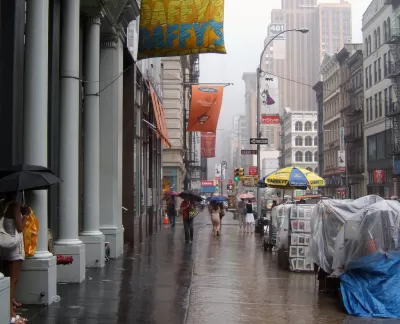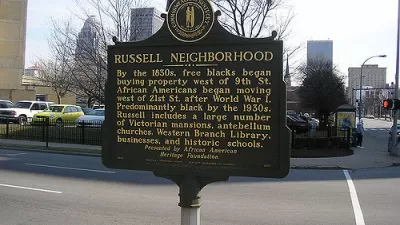Scott Beyer details the old real estate wisdom of "retail follows rooftops," especially as evidenced by cities like Cleveland in recent years.

Scott Beyer begins an article for Governing by noting that Downtown Cleveland has all the trappings of a full-blown downtown renaissance: "Downtown Cleveland right now has its highest-ever population, with more than 13,000 residents and lots of new housing developments on the way. There are more than 4,000 hotel rooms, with another thousand expected by 2016."
Yet there's something missing:
"If you are looking for a large grocery store, however, you’re still out of luck. The first one, Heinen’s Fine Foods, is set to open soon, but residents so far have had to make do with quick marts and gourmet prepared-food delis. Even following the opening of Heinen’s, downtown Cleveland still will not have many of the amenities found in denser areas: Neither Target nor Walmart has launched one of its urban-style branches here. There’s no large office supply or electronic retailer. And the many empty storefronts remind passersby of the basic amenities they are still missing, such as a hardware shop."
Beyer notes that the example of Cleveland is one of two ways that the "retail follows rooftops" trend manifests:
"In trending Brooklyn neighborhoods like Crown Heights, for example, one still finds greasy takeouts and bodegas with bulletproof glass, rather than healthy sit-down restaurants or other amenities that newly arrived residents might want. Meanwhile, cities without a previous critical mass, like Cleveland, can have difficulty attracting retail altogether, despite their large residential presence."
Beyer goes on to examine the tools that cities use to speed up the process of retail catching up with the residential population, such as tax increment financing and business improvement districts.
FULL STORY: The Neighborhood Has Gentrified, But Where’s the Grocery Store?

Alabama: Trump Terminates Settlements for Black Communities Harmed By Raw Sewage
Trump deemed the landmark civil rights agreement “illegal DEI and environmental justice policy.”

Planetizen Federal Action Tracker
A weekly monitor of how Trump’s orders and actions are impacting planners and planning in America.

Why Should We Subsidize Public Transportation?
Many public transit agencies face financial stress due to rising costs, declining fare revenue, and declining subsidies. Transit advocates must provide a strong business case for increasing public transit funding.

Understanding Road Diets
An explainer from Momentum highlights the advantages of reducing vehicle lanes in favor of more bike, transit, and pedestrian infrastructure.

New California Law Regulates Warehouse Pollution
A new law tightens building and emissions regulations for large distribution warehouses to mitigate air pollution and traffic in surrounding communities.

Phoenix Announces Opening Date for Light Rail Extension
The South Central extension will connect South Phoenix to downtown and other major hubs starting on June 7.
Urban Design for Planners 1: Software Tools
This six-course series explores essential urban design concepts using open source software and equips planners with the tools they need to participate fully in the urban design process.
Planning for Universal Design
Learn the tools for implementing Universal Design in planning regulations.
Caltrans
Smith Gee Studio
Institute for Housing and Urban Development Studies (IHS)
City of Grandview
Harvard GSD Executive Education
Toledo-Lucas County Plan Commissions
Salt Lake City
NYU Wagner Graduate School of Public Service





























